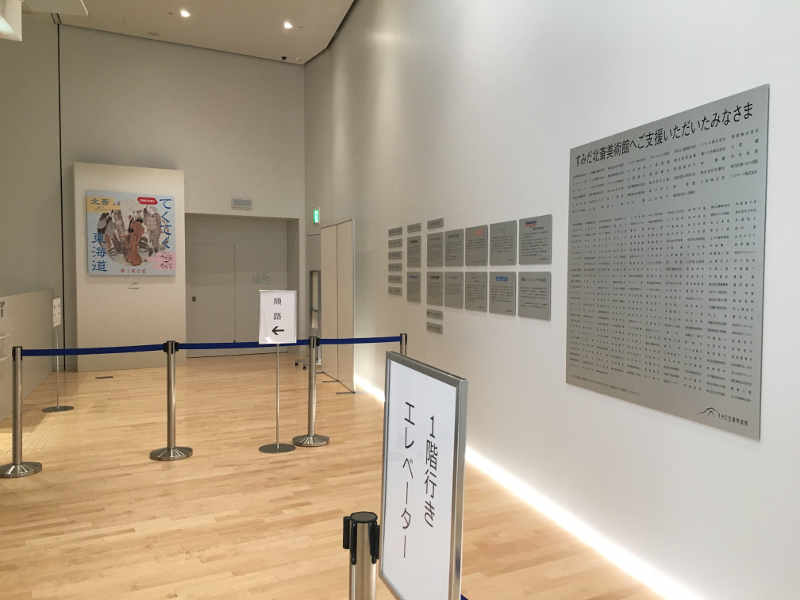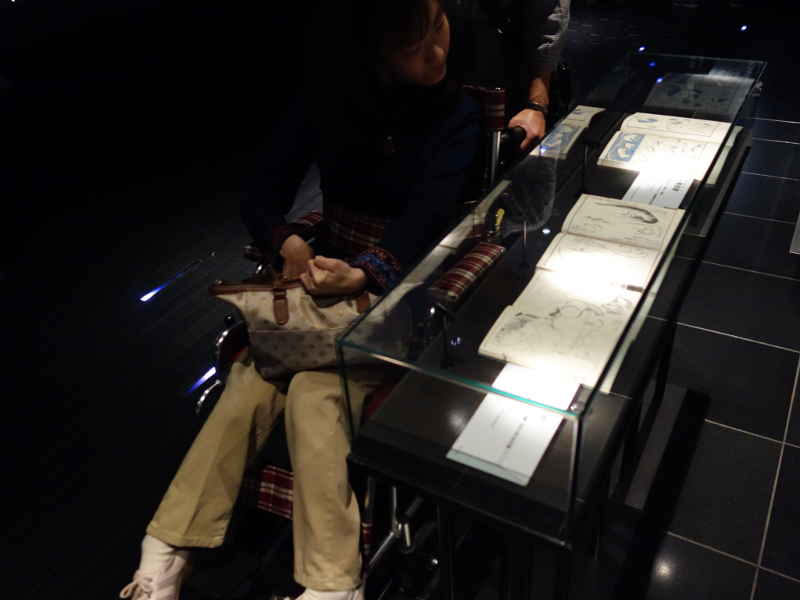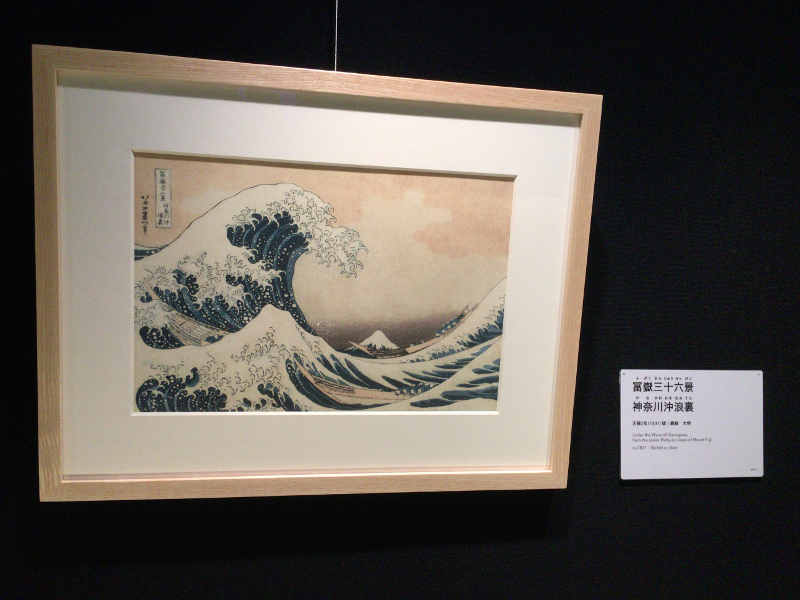Hi! I’m YUKORIN, a wheelchair user. In the blog post, I will show you around the Sumida Hokusai Museum in terms of wheelchair accessibility. We went there in the latter half of our fieldwork in Ryogoku area.
The Sumida Hokusai Museum
After I met Accessible members at the West Gate of JR Ryogoku Station, we headed for the museum while taking a walk around Ryogoku town. It took about 10 minutes from the station to the museum. I could walk around in a wheelchair as there were no steps or steep slopes on the way. The warm weather and the retro ambiance of the town made our conversation lively.

We enjoyed walking around Ryogoku town.
We arrived at the Sumida Hokusai Museum. What a modern building! The art museum is located in a park. It created a peaceful atmosphere.

The Sumida Hokusai Museum in the park
The stylishly designed triangular entrance. There are no steps, of course. Let’s go in!

The entrance of the museum
We enjoyed the permanent exhibition. When people with disabilities present their disability certificate to a staff member at the General Information Ticket Counter, they and their attendants are admitted to the permanent exhibition for free. The free admission for their attendants applies to one attendant per person with disability. However, when people with disabilities watch a special exhibition, the admission fee discount varies by exhibition. By the way, you are asked to show your disability certificate to a staff member again at the entrance of the exhibition room, instead of showing the ticket. Therefore I recommend keeping your certificate within easy reach in your bag so you can take it out of your bag soon when you enter the exhibition room.

The display about the admission fee
A multipurpose restroom is near the General Information Ticket Counter. The function as a wheelchair accessible restroom is satisfactory although I found it a bit smaller than it looked. This is the only multipurpose restroom in the museum.

The multipurpose restroom
There are two elevators which are a little small. Each of them would accommodate one regular size wheelchair.

One of the elevators
The entrance of the permanent exhibition room looks like the below. Wheelchair users can walk through the spacious entrance if it is not crowded.

The entrance of the permanent exhibition room
Katsushika Hokusai is a world-known artist for his ukiyo-e painting, which are mainly woodblock prints. Let me make a brief introduction of Hokusai. He was born in the Sumida district in 1760 during the Edo period. He created many of his fine artworks in the area. Particularly famous are “The Great Wave off Kanagawa” and “South Wind, Clear Sky,” also known as “Red Fuji,” from his masterpiece series “Thirty-six Views of Mount Fuji.” Many distinguished European artists such as the painter Vincent van Gogh and the composer Claude Debussy were influenced by his works. He was also the only Japanese person to be selected for “The Most Important Events and People of the past 1,000 years” in the US Life Magazine published in 1999.
Hokusai’s phantom work titled “Susanoo no Mikoto Yakujin Taiji no Zu,” which is “Killing the God of Plague” in English, is displayed at the entrance of the permanent exhibition room. The picture below is a replica of the genuine work which was destroyed in the Great Kanto Earthquake. Through state-of-the-art technology and traditional restoration technology, this work was recreated for the first time in about 100 years. I had to look up from a wheelchair because it was hung on the upper side of the wall.

“Killing the God of Plague”
This was the most impressive accessibility point for me in the museum. The long counters installed in front of the exhibits are designed to be wheelchair accessible. Wheelchair users can enjoy the exhibits over the counters without feeling a great distance between them.

The wheelchair accessible counter
The exhibition case was placed over the counter. I could not clearly see the exhibits inside the case placed on such a far and low place.

I couldn’t look inside the exhibition case.
Great! I was able to approach the exhibition case and see the exhibits inside because there was some space around it.

I could look inside the exhibition case.
The touch-screen panels that provide detailed insight into Hokusai’s works are installed in the counters at the appropriate heights for wheelchair users. They also display information in English, Chinese and Korean. You can enlarge images of his works on the screen and see how delicate their colors and lines are.

The touch-screen panel providing insight into Hokusai’s works
They are two of his world masterpieces, “The Great Wave off Kanagawa” and “South Wind, Clear Sky.” The wave is larger than Mt. Fuji. How exquisite a balance there is with the red Fuji and the clouds! What I find quite interesting is their composition. Hokusai must have been an imaginative painter.

“The Great Wave off Kanagawa”

“South Wind, Clear Sky”

We took a commemorative photo in front of the museum.
At the Sumida Hokusai Museum, you will have an interesting experience exploring Japanese culture during the Edo period in the modern facility. I recommend not only wheelchair users but overseas tourists to visit the art museum. Although I’m not so familiar with Japanese art, I fully enjoyed Hokusai’s world together with our members. Late blooming cherry blossoms created a soft and gentle atmosphere around us on the way home.
